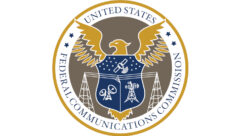In laying out plans for annual national EAS tests, the Federal Communications Commission has included a technical question that touches on encoding/decoding equipment.
In the Second Further Notice of Proposed Rulemaking on EAS, which it published last week, the commission outlined numerous questions it is exploring in anticipation of establishing national tests. One of them is that coder/decoder manufacturers “may have programmed their devices to receive and transmit EANs in different ways.” This may affect the ability of some devices to relay an EAN properly.
“In its 2008 Closed Circuit Test Report, the Primary Entry Point Administrative Council noted that many ENDECs process EAN messages by ignoring FIPS, i.e. location codes for national level messages, on the assumption that a national message is intended for the entire nation,” it stated.
“Accordingly, they transmit the message whether or not an EAN contains a FIPS code. At least one ENDEC manufacturer, however, has devices which require a FIPS code match. Thus in order to properly forward an EAN, the devices must receive a message that contains an appropriate FIPS code as authorized by commission rules.”
The commission asks whether this situation raises further problems and what it should do about them.
“Could the difference in how these ENDECs are programmed result in breaks in the ‘EAS chain’?” it asks. “Could this impact the relay of an EAN test message during a national EAS test? If so, how?”
The FCC said it also wants comments on what it should do to address this problem prior to a national test.
“Should the commission, for example, adopt a requirement that all ENDECs relay an EAN message irrespective of any FIPs code? What would be the cost of implementing such a requirement prior to a national test? Alternatively, are there non-regulatory actions the commission should take? Should the commission designate a national-level FIPS code and, if so, what would the impact of the ENDEC manufacturers be?”
Read the full EAS report here. In filing comments, refer to EB Docket No. 04-296.










